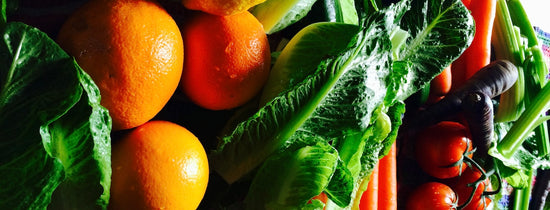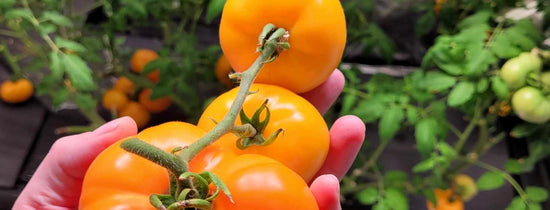To start off this tutorial I’d like to list some of the most popular Day-Neutral crops grown both indoors & outdoors:
- Corn
- Strawberries
- Chilli
- Tomato
- Cucumber
- Cannabis
Growing auto-flowering (day neutral) varieties has become quite popular amongst the new generation of hobby growers making ‘Autos’ quite a desirable crop to grow due to their fast turnaround and compact size, making them perfect for many new growers starting off they are also appealing to experienced growers who run a Sea of Green (S.O.G) as their growing style.
Auto flowering varieties completely mature from seed to harvest in approx. 8-16 weeks, which means they are not subject to photo-periodism. ‘Autos’ are Day-Neutral plants which means they flower without regard to photo-period (Change of daily light exposure)
Short-day plants for example, vegetate best when the daylight hours are extended beyond normal. When the day hours are longer, the storage of P-fr (Far-red) cannot fully decay before the light resumes, so the plant remains in a vegetative state. When short-day plants are exposed to a longer period of darkness (12+ hours) the far-red (P-fr) is now able to fully decay their built-up stores of P-fr, which then initiates the phytochrome to trigger flowering.
For some plants, the requirement for a dark period is absolute, they are classified as long-night plants and they will not flower until exposed to long nights, this is known as obligate photo-periodism.
HOW MANY AUTOS CAN YOU GROW IN A 1.2M/SQ.(4X4’) SPACE?
Selecting how many plants to grow, really does determine the required end result especially if crop yield is of importance. Growing regular photo-period varieties in this space is vastly different in comparison, one plant will fill this space quite effectively whereas most Auto’s will not. The numbers are always a preference, so always do what is comfortable for your current situation. Most would grow 4-6 in this space, be aware that lower numbers may not fill the space as effectively. Over the years we have seen some interesting grow room layouts and it is true that some growers attempt 25 plants in this space with incredible success, given the grower understand the physiology of the plants they are growing.
WHAT IS THE BEST WAY TO GROW & TRANSPLANT AUTOS?
Despite popular belief, you can start your seedling in a much smaller pot than the suggested final container.
Germinate the seed in preferred starter plug/cube. I opt against starting any seeds in paper towel it makes no sense to expose the tap root so early on, this can contaminate the plant before you have even begun, always start the seed pointy end down in grow wool or propagation cubes, in fact if you’re skilled at germinating seeds you can even start them off in pots of coco coir and cover them with some plastic wrap until the seed emerges.
For those that have germinated in grow cubes once your seedling has its first pair of serrated true leaves (this is usually present with a little bit of the tap root emerging from the base of the cube, transplant the plug to a 500ml pot using a coco & perlite mix and flood in with the first feed.
The seedling will thrive in this sized pot over the next 7-21 days. Once the seedling has developed a nice root ball you should transplant it to the final pot very carefully (Always wear gloves) pre-fill half of your new pot beforehand, this will make it easier to place the transplant and then cover over with the remaining volume of Coco.
Your plant is now in its final pot, most importantly from here we must feed daily we want a moist pot, not saturated, if it is saturated then only feed small amounts of food or opt to not feed on that particular day, you may have to do this for a week or 2 upon transplanting to get the roots powering through the pot, this is coined as ‘Coco Dry back
AUTO-FLOWERING PLANTS AND LIGHTING
The best answer for this is to use a high powered full spectrum LED light and observe the correct distance using a quantum light meter or spectrometer, this will give you the information required to properly vegetate and flower any crop, if this doesn’t make sense have a read of our PPFD blog and lighting requirements for different crops. Understanding how light works will be crucial for indoor gardening success.
AUTO-FLOWERING FEEDING - PH & EC
Like any plant we are feeding, we approach nutrition relative to the growth of the plant. Most feeding charts will be labelled week 1 feeding doses; have a look over the weeks ahead you should see the A/B nutrient suggestions earlier on will have much lower dosages so trust the feeding guides they are rarely wrong in my experience.
Over the entire grow most Auto’s will generally not consume an EC above 1.6 - 1.8, in fact an EC higher than that will actually do the exact opposite of the intended outcome, food will become restricted and the yield will be insufficient if you add to much food, best tip I can offer here is to follow the recommended feeding guide & dosages for your first few crops then modify the solution to your liking.
BASIC FOODS, BASIC ADDITIVES.
A simple feeding guide to follow for any Day-Neutral plants:
|
WEEK 1-3 |
EC 0.6-0.8 – pH: 5.7-6.0 |
|
WEEK 4-6 |
EC 0.8-1.2 – pH: 5.8-6.0 |
|
WEEK 8-9 |
EC 1.2-1.5 – pH: 5.7-6.0 |
|
WEEK 9-11 |
EC 1.5-1.8 – pH: 5.7-6.2 |
When you see your crop coming into maturity its time to flush away any excess solution, there are many flushing agents available for this and they are mostly comprised of citric acid & dextrose, these solutions will help lower the EC without the continuous flooding of water, use these flushing agents for approx. 2 days then let the coco pot ‘dry-back’ then harvest!
|
WEEK 11-12 FLUSHING TO RUN-OFF |
EC 0.0-0.3 – pH: 6.0 |
#growwithus







